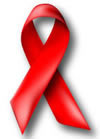
|
NATIONAL BLACK HIV/AIDS AWARENESS DAY (Feb. 7)
Statement from Dr. Jonathan Mermin
Director, National Center for HIV/AIDS, Viral Hepatitis, STD, and TB Prevention
Centers for Disease Control and Prevention
February 6, 2014 - Tomorrow marks the observance of the 14 th annual National Black HIV/AIDS Awareness Day. This day reminds us that HIV
remains a major public health concern in African American communities more than thirty years after the first AIDS cases were identified.
On this day and every day, we acknowledge the need for continued effort and improved results in fighting this preventable infection.
All African Americans deserve lifesaving HIV prevention, testing, care, and treatment services.
African Americans now bear the greatest burden of HIV in the United States, accounting for nearly half of the more than 1.1 million
Americans living with HIV and nearly half of those who have died with AIDS since the beginning of the epidemic. Among African
Americans, just as in other racial and ethnic groups, gay and bisexual men, especially young men, are the most impacted
population-accounting for the majority of new infections. African American women also bear a large, disproportionate
burden, with almost two-thirds of new infections in 2010 among women occurring among black women.
HIV treatment helps persons with HIV live healthy lives and prevents transmission of the virus to partners. However, new data released
today show that additional efforts are needed to ensure that individuals who are infected with HIV receive the care and treatment they
need. This requires improvements not only in diagnosing individuals with HIV, but also ensuring they are engaged in care and treated
effectively to keep their virus under control.
The analysis, published today in CDC's Morbidity and Mortality Weekly Report , examines the percentage of African Americans diagnosed
with HIV infection who were receiving care and treatment in 2010. Among blacks who had been diagnosed with HIV, 75 percent were linked
to care, 48 percent stayed in care, 46 percent were prescribed antiretroviral therapy, and 35 percent achieved viral suppression
(i.e., the virus is under control at a level that helps keep people healthy and reduces the risk of transmitting the virus to
others). Black males had lower levels of care and viral suppression than black females, and those who were younger (under
the age of 25) had lower levels than those who were older.
Treatment guidelines in the United States recommend that all people with HIV start antiretroviral therapy regardless of the severity of
illness. Testing is the critical first step in this effort. CDC recommends that healthcare providers provide persons between the ages of
13 and 64 HIV testing at least once, and those at higher risk should get tested more frequently. CDC funds many testing efforts
targeted to African Americans, including gay and bisexual men, heterosexual men and women, youth, and transgender persons,
to help them learn their HIV status and link those with HIV to care services. In addition, CDC funds health departments
and community organizations across the nation to focus their efforts on activities that will help improve linkage to
HIV care, reengagement in care, and treatment.
If we are to reduce HIV disparities in the U.S., and substantially prevent new infections, we must do a better job of addressing HIV in
African American communities. Everyone can play a role-by being informed, talking about HIV, and getting tested. People who don't have
HIV can take steps to protect themselves so that they can stay negative. People with HIV can get the care they need and stay on
treatment. Together, we can fight this disease.
###
Contact:
National Center for HIV/AIDS, Viral Hepatitis, STD, and TB Prevention
(404) 639-8895
NCHHSTPMediaTeam@cdc.gov
Source:
http://www.cdc.gov/nchhstp/newsroom/2014/NBHAAD-2014-Statement.html
For more HIV and AIDS News visit...
Positively Positive - Living with HIV/AIDS:
HIV/AIDS News
|